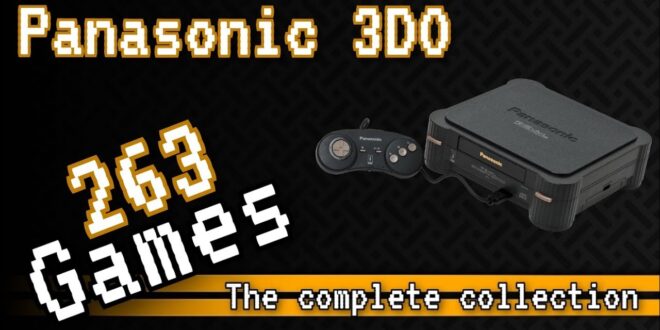Exploring the Legacy of the Panasonic 3DO: Innovation Ahead of Its Time
In the early 1990s, the gaming industry witnessed the arrival of a console that promised to revolutionize the home entertainment experience: the Panasonic 3DO Interactive Multiplayer, commonly known as the 3DO. Developed by The 3DO Company, a conglomerate that included tech giants like Panasonic, the 3DO was a cutting-edge platform that aimed to set a new standard for interactive gaming.
Specifications and Technology
At the heart of the 3DO’s innovation was its hardware. The console was powered by a 32-bit RISC CPU running at 12.5 MHz, a significant leap from the 16-bit systems that were prevalent at the time.
Key Specifications
- CPU: ARM60 32-bit RISC processor running at 12.5 MHz
- RAM: 2 MB of DRAM and 1 MB of VRAM
- Graphics: Custom-designed graphics engine capable of rendering 3D environments with texture mapping
- Resolution: Support for 640×480 display resolution, exceptional for the time
- Storage: Double-speed CD-ROM drive, allowing for larger and more complex games
- Audio: 16-bit stereo sound, with the ability to play audio CDs and support for Dolby Surround sound
- Controller: Unique for offering a daisy-chain connection port that allowed multiple controllers to be linked together
- Expansion: Expansion port for future upgrades and peripherals
- OS: Opera, a custom-designed operating system tailored for gaming and multimedia applications
The 3DO’s graphics were unrivaled, thanks to its custom-designed graphics engine capable of producing rich, textured 3D environments and detailed sprites. This power enabled game developers to create expansive worlds and complex gameplay mechanics that were not possible on earlier consoles.
The History of the 3DO
The 3DO was conceived by Electronic Arts founder Trip Hawkins, who envisioned a high-powered console that was both a gaming platform and a multimedia hub. The system’s open platform model was unique for the time; rather than manufacturing the console themselves, The 3DO Company licensed the technology to various partners, including Panasonic, Sanyo, and GoldStar.
Launched in October 1993, the 3DO hit the market with a steep retail price, initially costing consumers a whopping $699. This price point was a significant barrier to entry, especially when compared to competitors like the Sega Genesis and Super Nintendo Entertainment System.
System Review and Gaming Experience
The 3DO’s game library, though limited in comparison to its contemporaries, included a number of standout titles that showcased the system’s capabilities. Games like “Road Rash,” “Gex,” and “Return Fire” were critically acclaimed and demonstrated the potential of the hardware with their impressive graphics and sound.
Despite its advanced technology, the 3DO struggled to gain a foothold in the market. The high cost of the system, combined with a less extensive game library and the impending release of the Sony PlayStation and Sega Saturn, contributed to the 3DO’s difficulties in attracting a wide audience.
Cutting Edge but Commercially Challenged
The 3DO’s ambition to be at the forefront of interactive entertainment was evident in its hardware and multimedia features. It was one of the first consoles to emphasize the importance of CD-based storage, full-motion video, and integrated 3D graphics, elements that would become standard in the next generation of gaming systems.
However, despite its technological prowess, the 3DO’s legacy is tinged with the harsh reality of commercial failure. The system was discontinued in 1996, just three years after its launch, as The 3DO Company shifted focus away from hardware to software development.
Conclusion: A Visionary Piece of Gaming History
The Panasonic 3DO remains a fascinating piece of gaming history. It was a visionary platform that arrived at a transitional time in the gaming industry. Its specifications and capabilities were undoubtedly ahead of their time, offering a glimpse into the future of home entertainment.
In retrospect, the 3DO can be appreciated for its ambition and the risks it took in pushing the boundaries of what a home console could be. Its story serves as a reminder that in the fast-paced world of technology, being cutting edge is sometimes not enough to guarantee success. Nonetheless, the 3DO’s innovative spirit continues to inspire the evolution of gaming consoles even today.
 Retro-Replay.com Retro gaming reviews, news, emulation, geek stuff and more!
Retro-Replay.com Retro gaming reviews, news, emulation, geek stuff and more!




